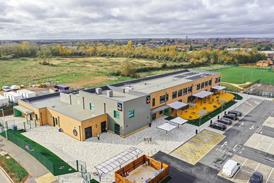It is the video equivalent of going from vinyl records to CD audio. But why use digital recording anyway? For three reasons: labour, labour and labour. It is all about handling and storage and how much time is involved – if it takes 45 seconds to change a tape, that could add up to a couple of hundred hours per year in some CCTV schemes.
What medium does digital recording use for storage? There are a variety of media: hard disk, removable hard disk, RAID (Redundant Array of Inexpensive Disks), DVHS, DV (Digital Video), DAT (Digital Audio Tape), EXABYTE, AIT (Advanced Intelligent Tape), CD-ROM or WORM (Write Once Read Many), DVD (Digital Versatile Disk) or PD (Photo-Optic Disk).
How much can they store?
- HD up to 60GB
- Removable HD are usually a little smaller
- RAID up to 16TB
- DAT up to 12GB and stackable usually to 5 (No 6 is a cleaner)
- EXABYTE up to 14GB, stackable to 12TB. (EXABYTE in capital letters is the name of a manufacturer of a tape-based storage device. In lower case, exabyte means 2 to the power of 60.)
- AIT 2 up to 50GB and stackable to 32TB, includes embedded memory (16k)
- DV up to 60GB
- CD ROM up to 700MB
- DVD up to 4.7GB.
They are not compatible, except you can play CDs on a DVD machine, but not necessarily the other way round.
Dilemma: When evidence is seized by the police, how much other material do they take? Do they have a right to that other material – does it take a court order? Will the police replace the media they took? Not very likely.
How long will a recording last?
It depends on the data compression used. A quick calculation for the equivalent of an E180 tape: 50 fields per second for three hours equals 540,000 images. Compress to, say, 20kB per image would mean the disk needed is 10.8GB.
Digital recording is the video equivalent of going from vinyl records to CD audio. Why use it? Three reasons – labour, labour and labour
Common compression types include JPEG, JPEG 2000 (a superseding version, not compatible with JPEG), MPEG 1 and MPEG 2, wavelet and H261 and H263. Too much compression can ruin the image, but some compression types give fixed quality. Smaller pictures mean smaller files – but a smaller picture also means less detail. CIF (Common Intermediate Format) is only 352 pixels by 288 high.
It is unlikely – though possible, if you take your own equipment – because there is no compatibility … yet. But there is hope for the future in the form of a group called the Digital Forum.
It is a myth that predictive compression (MPEG) is not accepted in court. All compression techniques are permissible – unless the judge rules them out.
- What does the customer/installer need?
- A real time video output
- The ability to make prints
- The ability to export to something like CD.
How does the customer know which to buy? There are a couple of questions to ask first:
- What do you need from the recordings?
- How long will you keep them? The recommendation is 31 days.
- What will you do with your old multiplexer and VCR? – Don't throw them out.
- How will you make evidential copies?
A final warning: the technology may be out of date in six to nine months – but think of the benefits!
Analogue will still be around in five or ten years. Technology pushes towards digital, but hybrid solutions may be the best fit – Dominic Oughton
Death of analogue? No!
ETHERNET AND INTERNET PROTOCOL integration into CCTV probably does NOT spell the end of analogue, Baxall managing director Dominic Oughton told the same Securex session.
Network-based video surveillance solutions are beginning to be promoted widely, but there is little available data to quantify the benefit of the investment. Mr Oughton identified the strengths and weaknesses of the competing technologies: analogue, broadband ATM and IP/Ethernet.
Analogue
- A well-established technology
- Transmission over coax or fibre
- Switching via cross-point switch/matrix
- Control via a keyboard
- Recording via multiplexer and VCR or MHDR
- Viewed on an analogue monitor.
IP over Ethernet
- IP is an addressing protocol
- Ethernet is a narrow to broadband (10Mb to 1Gb) transmission technology
- Basis of most corporate LANs and edge of WWW
- Transmits data via packets on a point-to-point (TCP) or multicast (UTP) basis
- Managed Class of Service (prioritisation within bandwidth constraints)
- Image digitised and compressed (typical 128Kb to 4Mb stream).
Broadband/ATM
- Asynchronous Transfer Mode is a broadband (155Mb to 40Gb) transmission technology
- Backbone of most corporate WANs & WWW
- Provides virtual point-to-point connections with allocated bandwidth
- Guaranteed quality of service
- Image digitised and compressed (typical 20Mb stream).
Source
Security Installer
Postscript
This article is based on presentations to the Securex 2001 conference, organised by CMP, 630 Chiswick High Road, London W4 5BG. Tel 020 8987 7877.




















